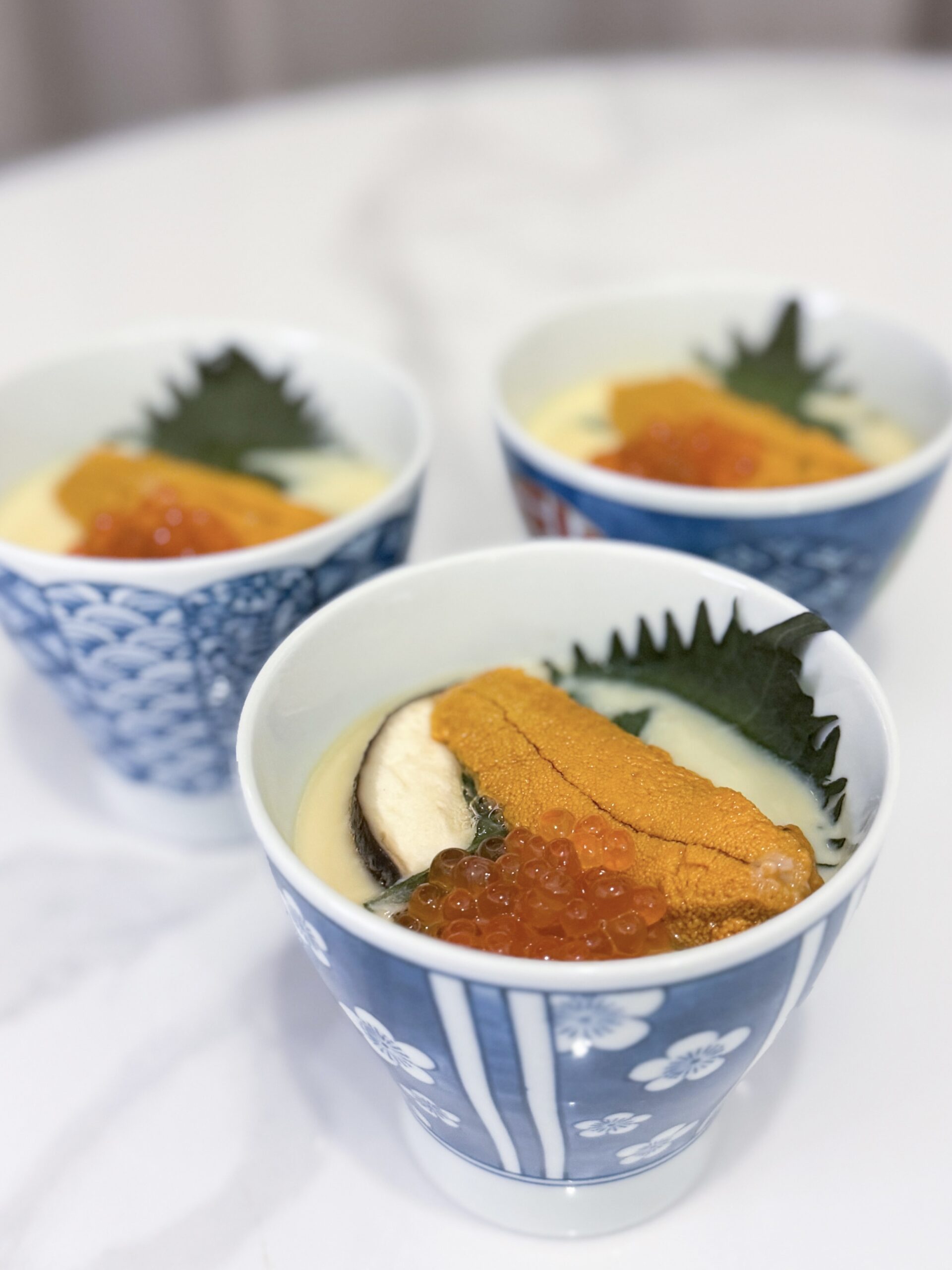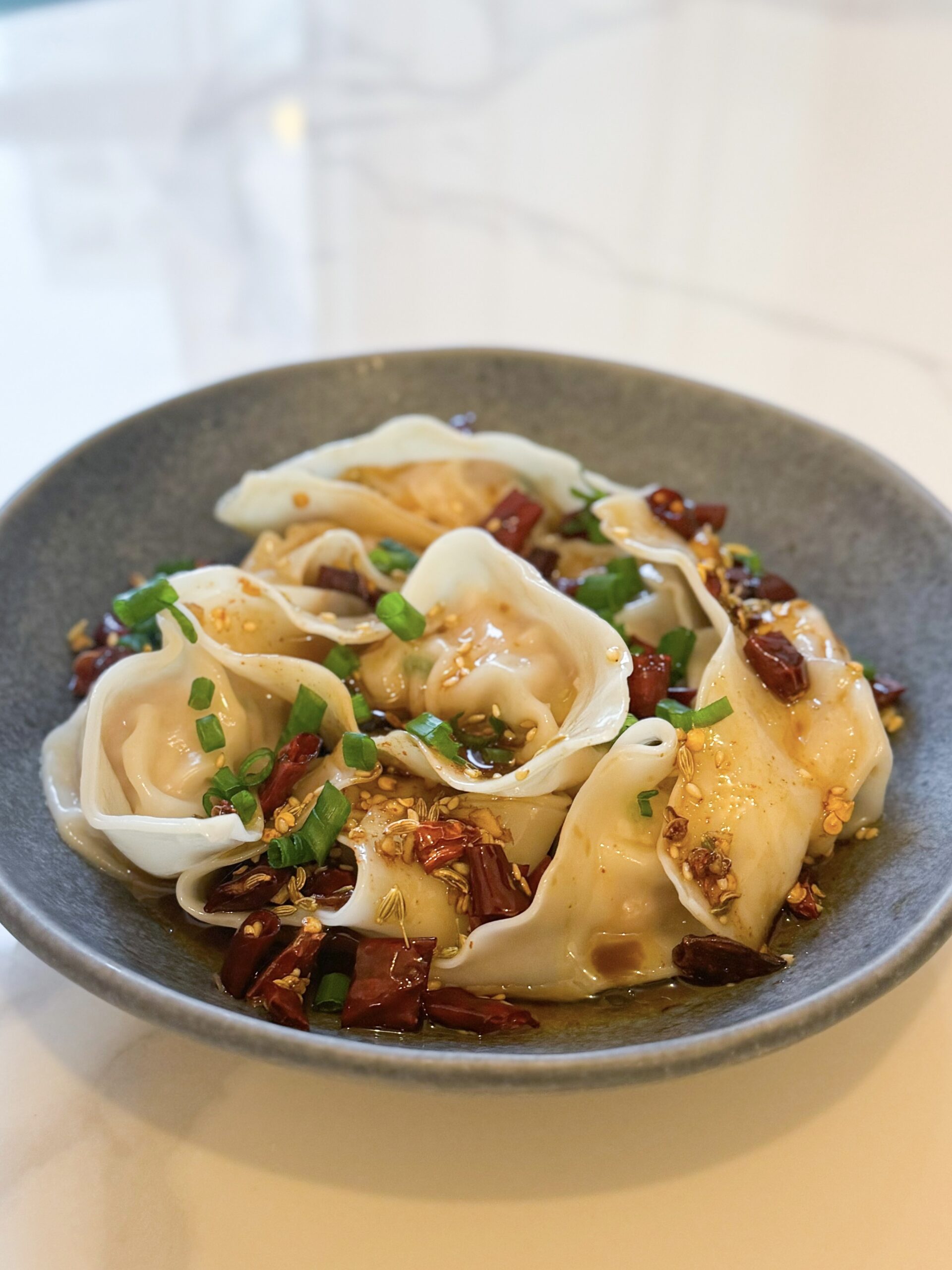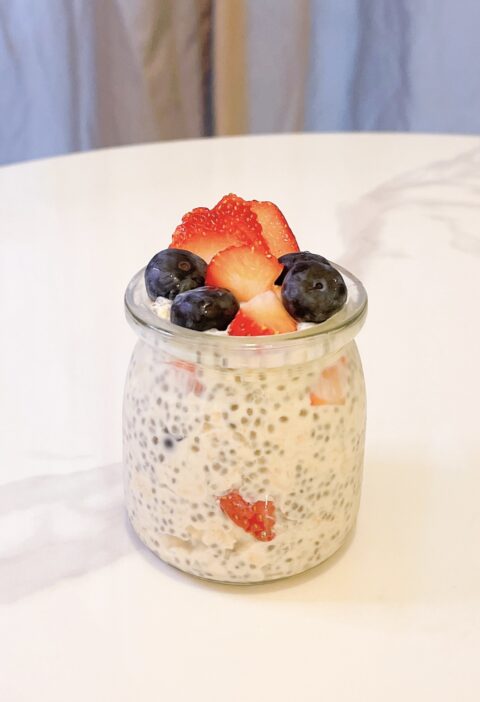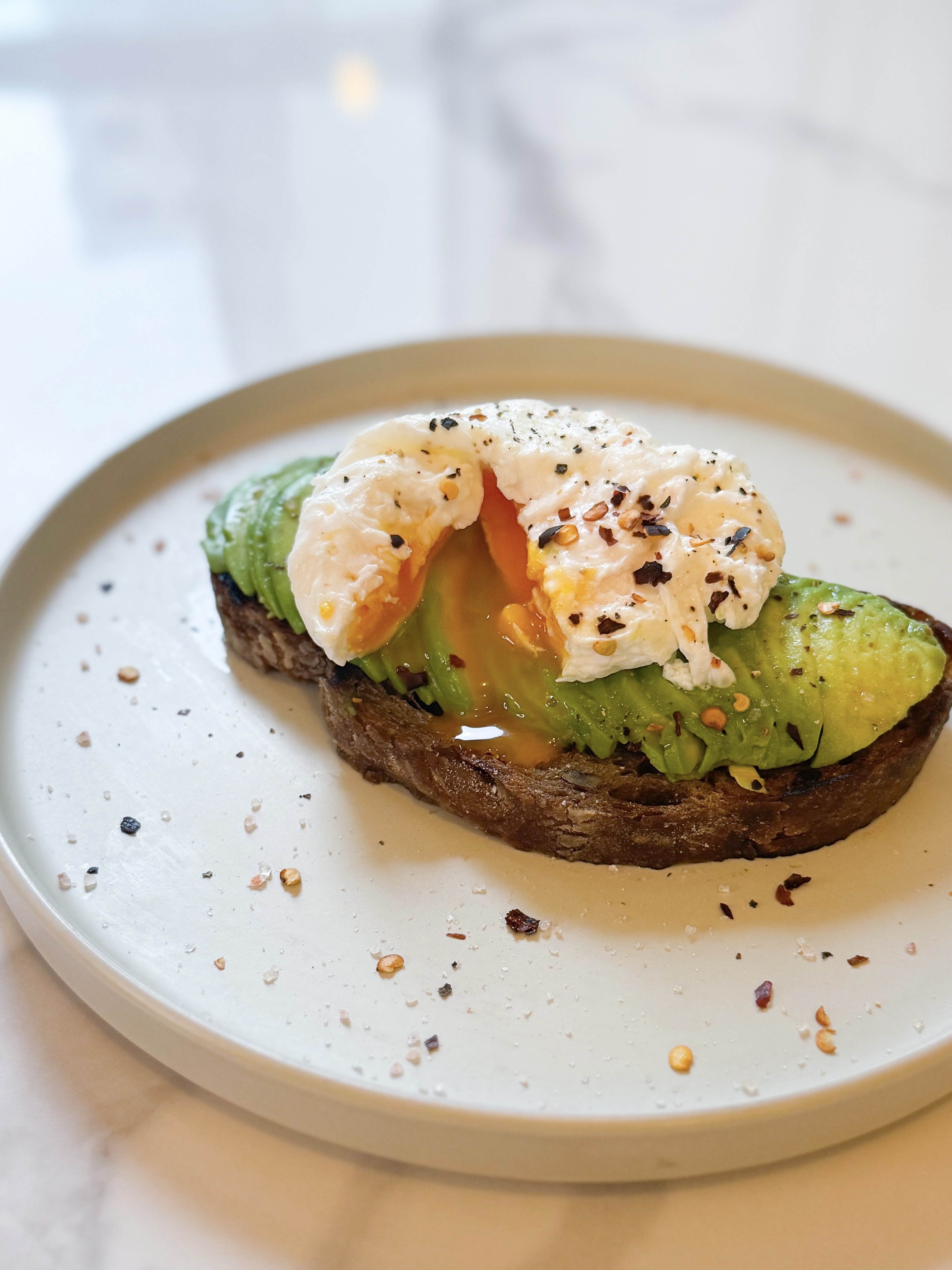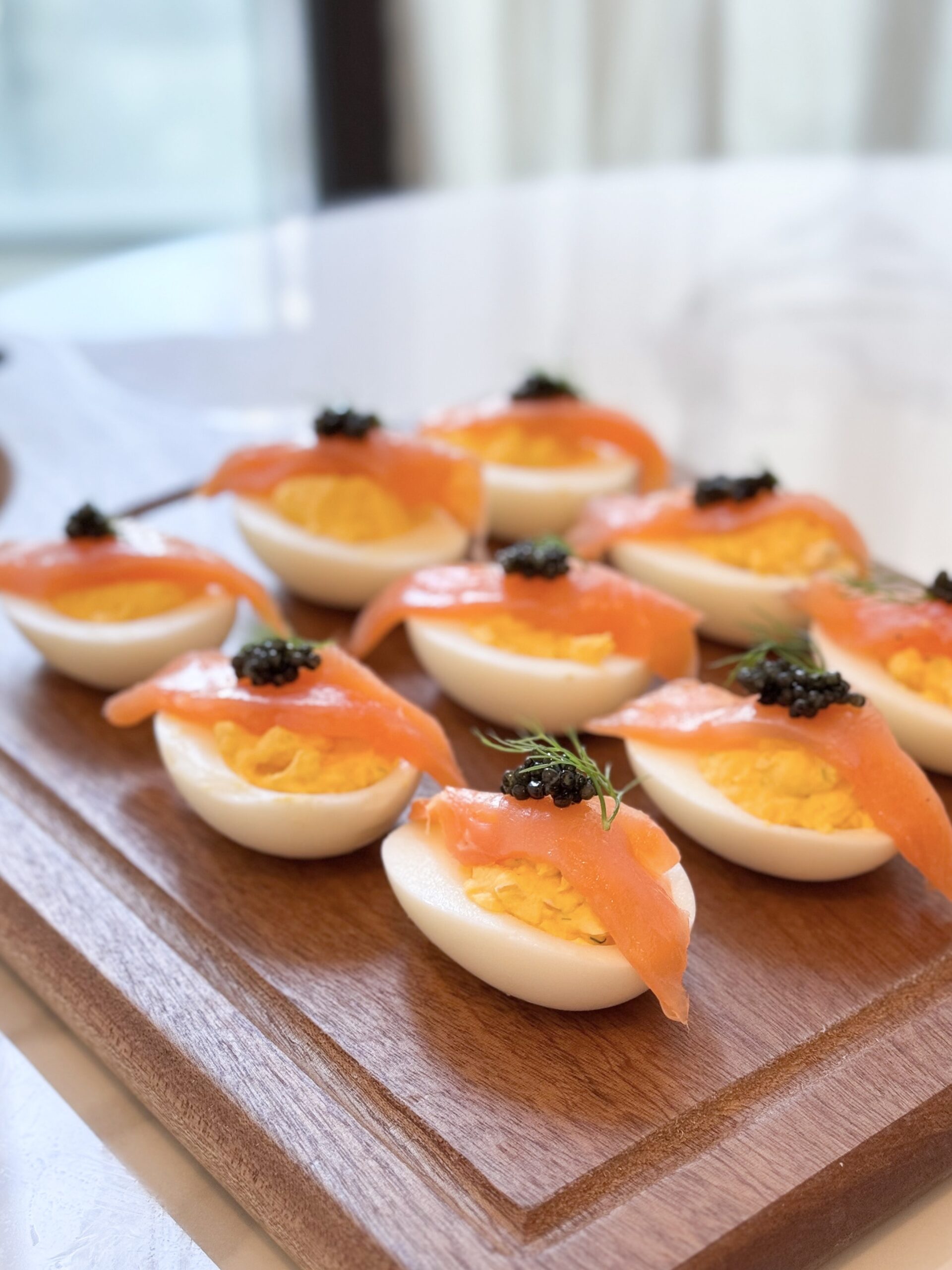What is Chawanmushi?
Chawanmushi is a revered Japanese delicacy that embraces simplicity and sophistication in its preparation. This luscious, velvety egg custard, gently steamed to perfection, is traditionally served in small teacups or chawan (tea bowls). The custard cradles a medley of delightful ingredients, creating a harmonious blend of flavors and textures.
How to Make Chawanmushi (Japanese Egg Custard) with Sea Urchin and Salmon Roe
Here’s a detailed recipe for making Chawanmushi with Sea Urchin and Salmon Roe:
Ingredients:
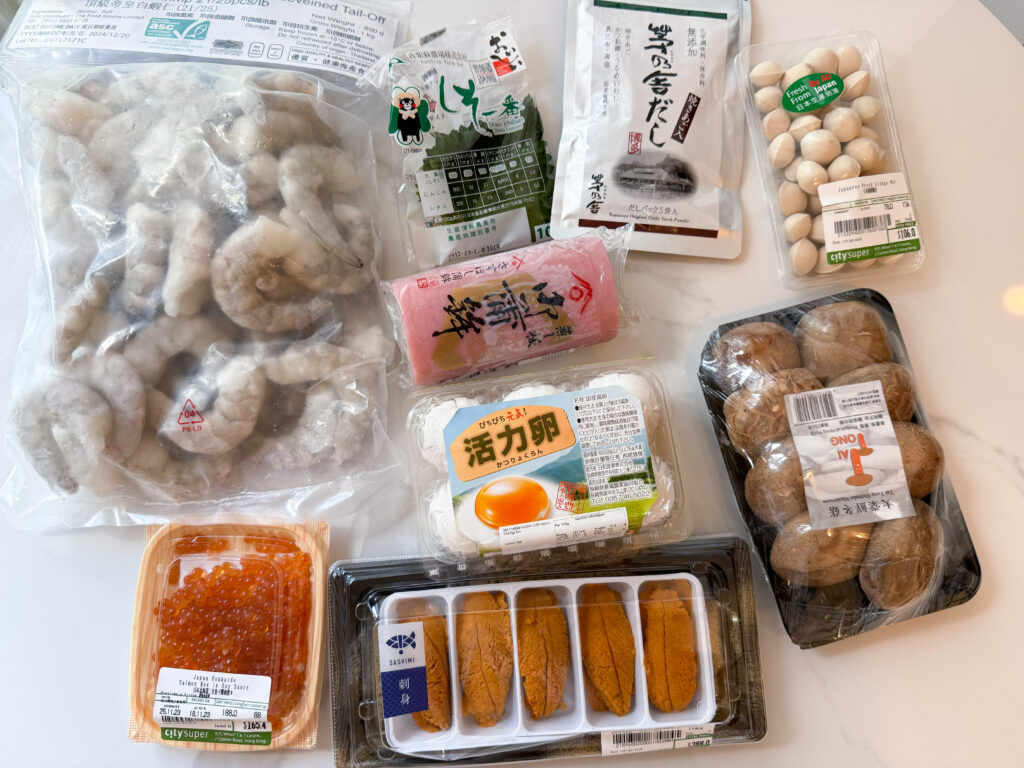
- 3 large eggs
- 2 cups dashi broth
- 1 tablespoon soy sauce
- 1 teaspoon mirin
- Sea urchin (uni) and salmon roe (ikura) for topping
- Other optional ingredients: sliced mushrooms, shrimp, chicken, or vegetables
Directions:
- Prepare Dashi Broth: Combine dashi, soy sauce, and mirin in a pot. Bring to a simmer, then let it cool.
- Beat Eggs: In a separate bowl, gently beat the eggs. Avoid creating bubbles for a smooth texture.
- Mix Eggs and Broth: Gradually add the cooled dashi mixture to the eggs, stirring gently to combine without creating foam.
- Strain Mixture: Strain the mixture through a fine sieve or cheesecloth to ensure a silky-smooth texture.
- Assemble: Distribute your chosen ingredients (seafood, vegetables) evenly into individual chawanmushi cups or small heatproof bowls.
- Pour Mixture: Pour the egg mixture over the ingredients, filling each cup about 80% full.
- Steam: Place the cups in a steamer and steam over high heat for 2 minutes than switch to low heat for 12 minutes until the custard is set but still slightly jiggly in the center.
- Serve: Top with a generous portion of fresh sea urchin and salmon roe before serving.
- Enjoy: Chawanmushi is best served warm. Allow the delicate flavors to captivate your taste buds as you savor each spoonful.
Prepare this dish with care and attention to detail, and you’ll enjoy a beautifully crafted Chawanmushi enriched with the delightful flavors of sea urchin and salmon roe.
Can I substitute Sea Urchin and Salmon Roe with other ingredients for Chawanmushi?
Chawanmushi is incredibly versatile and adaptable to various ingredients. You can swap out sea urchin and salmon roe with a wide array of alternatives based on your preferences or availability. Here are some suggestions:
- Proteins: Shrimp, cooked chicken, crab meat, thinly sliced pork, or tofu can replace sea urchin or salmon roe. These proteins add different textures and flavors to the custard.
- Vegetables: Consider using vegetables such as spinach, mushrooms (shiitake or enoki), diced carrots, bamboo shoots, or thinly sliced scallions. These vegetables not only add color but also provide contrasting textures to the custard.
- Seafood: Apart from sea urchin and salmon roe, you can incorporate other seafood like scallops, mussels, or even chunks of white fish for a delightful marine essence.
- Seasonal Ingredients: Embrace seasonal produce for unique Chawanmushi variations. Asparagus in spring, pumpkin in fall, or sweet corn in summer can infuse the custard with seasonal flair.
Feel free to mix and match these ingredients to create your personalized Chawanmushi. Experimentation is key to discovering new flavor combinations and textures that suit your taste preferences.
What are the Nutrition Values in Chawanmushi (Japanese Egg Custard) with Sea Urchin and Salmon Roe?
The nutritional values in Chawanmushi with sea urchin and salmon roe can vary based on the specific quantities of ingredients used and the serving size. However, here’s an approximate breakdown of the nutritional components:
Nutritional Values Per Serving (approximately):
- Calories: Around 150-200 calories per serving (this can vary based on the size of the serving and ingredients used).
- Protein: A typical serving provides about 10-15 grams of protein, primarily from eggs, sea urchin, and salmon roe.
- Fat: Contains a moderate amount of healthy fats, particularly from the eggs, salmon roe, and sea urchin. The omega-3 fatty acids from the seafood contribute to the overall fat content.
- Carbohydrates: Relatively low in carbohydrates, typically around 5-10 grams per serving. The carbohydrates come from the mirin used in the broth and possibly from added vegetables or other ingredients.
- Vitamins and Minerals: Chawanmushi is a good source of several essential nutrients found in eggs, sea urchin, and salmon roe, including vitamin D, vitamin B12, selenium, and iodine.
Sea urchin (uni) and salmon roe (ikura) are particularly nutritious seafood choices. They are rich in omega-3 fatty acids, which are beneficial for heart health, along with providing high-quality protein, vitamin D, and various minerals.
The exact nutritional values can vary depending on the specific brands or sources of ingredients used in the recipe. If you’re looking for precise nutritional information, it’s advisable to calculate based on the specific ingredients and their quantities used in your Chawanmushi preparation.
What is the best way to serve Chawanmushi (Japanese Egg Custard) with Sea Urchin and Salmon Roe?
Serving Chawanmushi with sea urchin and salmon roe involves an artful presentation that complements its delicate flavors. Here’s the best way to serve this dish:
Presentation:
- Traditional Serveware: Use small, elegant teacups or traditional chawanmushi cups if available. These cups are designed for serving and displaying this exquisite custard.
- Toppings: Carefully place a generous portion of fresh sea urchin (uni) and salmon roe (ikura) on top of each custard-filled cup. These luxurious toppings not only add flavor but also enhance the visual appeal of the dish.
- Garnish: Consider garnishing the Chawanmushi with a subtle touch, such as a sprig of fresh herbs (like chives or microgreens) or a thinly sliced piece of lemon zest for a pop of color.
- Serve Warm: Chawanmushi is traditionally served warm. Present it promptly after steaming to maintain its optimal texture and temperature.
Accompaniments:
- Tea or Sake: Serve alongside a delicate green tea or a smooth sake to complement the subtle flavors of the custard. The beverages can enhance the overall dining experience.
- Side Dish: As Chawanmushi is often part of a multi-course meal in Japanese cuisine, consider serving it before or alongside other dishes like sushi, sashimi, or a light salad to create a balanced and diverse dining experience.
Enjoyment:
Encourage diners to enjoy the Chawanmushi slowly, savoring each spoonful to appreciate the nuanced flavors and the creamy texture of the custard. The sea urchin and salmon roe toppings provide bursts of briny flavor that beautifully contrast with the silky custard.
By presenting Chawanmushi thoughtfully and pairing it with suitable accompaniments, you can elevate the dining experience and allow its delicate flavors to shine through.
How to store Chawanmushi (Japanese Egg Custard) with Sea Urchin and Salmon Roe
Storing Chawanmushi with sea urchin and salmon roe requires careful handling to maintain its texture and flavors. Here’s how to store it properly:
Refrigeration:
- Cooling: If you have leftovers, allow the Chawanmushi to cool to room temperature before refrigerating. Leaving it at room temperature for an extended period is not advisable due to the inclusion of seafood.
- Airtight Containers: Transfer any remaining Chawanmushi into airtight containers. Individual portions in smaller containers help maintain freshness.
- Refrigeration Time: Store the Chawanmushi in the refrigerator promptly, ideally within 1-2 hours of preparation, to ensure food safety.
Shelf Life:
Chawanmushi is best enjoyed fresh due to its delicate texture. When refrigerated properly, it can typically last for about 1-2 days.
Reheating:
- Gentle Reheating: When ready to enjoy the leftover Chawanmushi, reheat it gently to avoid overcooking. A steamer is the best option for reheating, as it helps retain the custard’s original consistency and flavors. If you don’t have a steamer, a microwave with low power settings can also be used.
- Avoid Overheating: Be cautious not to overheat the custard, as this can cause it to become rubbery or lose its delicate texture.
- Toppings: If possible, add fresh sea urchin and salmon roe just before serving reheated Chawanmushi to maintain their freshness and flavors.
Consumption:
Consume reheated Chawanmushi promptly to fully enjoy its flavors and textures. Avoid storing reheated leftovers again as repeated reheating can degrade the quality of the dish.
By storing and reheating Chawanmushi with care, you can extend its shelf life while preserving its delicate qualities for a flavorful dining experience.
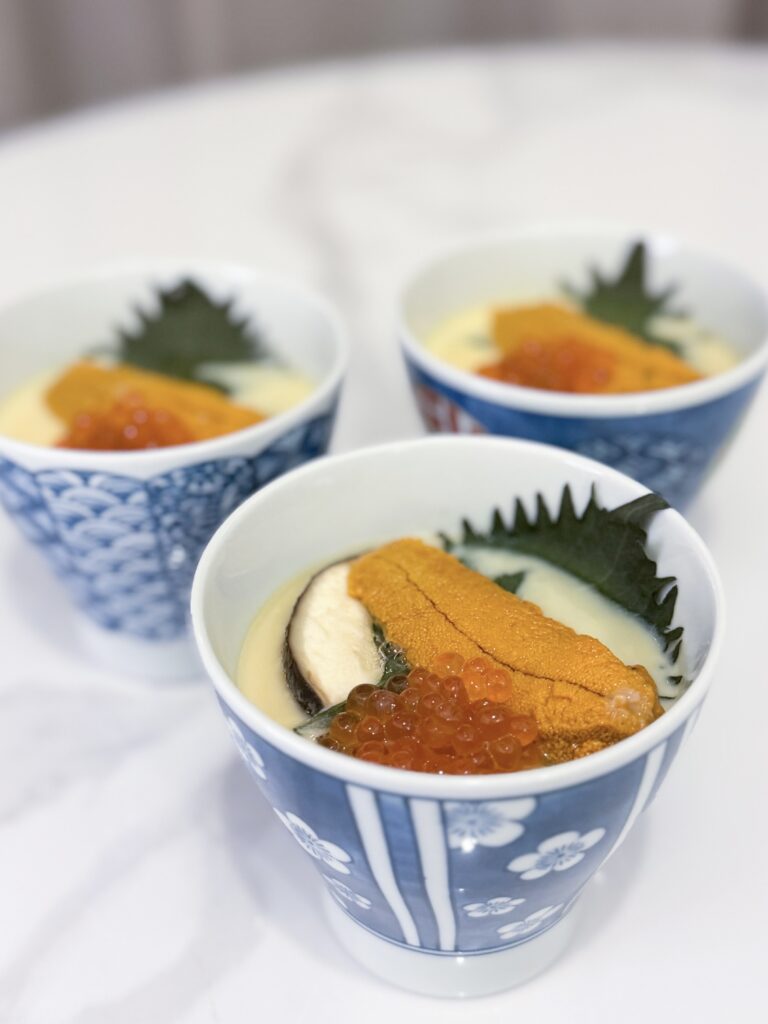
Chawanmushi (Japanese Egg Custard) with Sea Urchin and Salmon Roe
Description
Chawanmushi is a revered Japanese delicacy that embraces simplicity and sophistication in its preparation. This velvety Japanese egg custard, adorned with the delicate essence of fresh sea urchin (uni) and the briny bursts of salmon roe (ikura), embodies a harmonious marriage of textures and tastes. With its silky-smooth consistency and a medley of carefully chosen ingredients, Chawanmushi captivates the senses and offers a symphony of flavors in each spoonful.
Ingredients
Instructions
- Prepare Dashi Broth: In a pot, combine 2 cups of dashi broth with soy sauce and mirin. Bring it to a gentle simmer over medium heat. Once simmering, turn off the heat and let it cool to room temperature.
- Beat Eggs: Crack the eggs into a mixing bowl. Gently beat them, being careful not to create air bubbles. The goal is a smooth, silky texture.
- Combine Eggs and Broth: Slowly pour the cooled dashi mixture into the beaten eggs while continuously stirring. This gradual process ensures the eggs incorporate smoothly without forming bubbles.
- Strain Mixture: To achieve a silky-smooth texture, strain the egg mixture through a fine-mesh sieve or cheesecloth into a separate bowl. This step removes any lumps or impurities, resulting in a velvety custard.
- Prepare Ingredients: Choose your desired ingredients for the Chawanmushi cups. Sea urchin and salmon roe are excellent toppings. Other options include sliced mushrooms, shrimp, chicken, or vegetables. Distribute these ingredients evenly into individual chawanmushi cups or small heatproof bowls.
- Pour Mixture: Fill each cup or bowl about 80% full with the strained egg and broth mixture. Ensure that the ingredients are evenly dispersed within the cups.
- Steam: Place the cups in a steamer and steam over high heat for 2 minutes than switch to low heat for 12 minutes until the custard is set but still slightly jiggly in the center.
- Serve: Once done, carefully remove the cups from the steamer. Top each serving with a generous portion of fresh sea urchin and salmon roe for a luxurious touch.
- Enjoy: Chawanmushi is best served warm. Allow the delicate flavors to captivate your taste buds as you savor each spoonful.
Notes
- Prepare this dish with care and attention to detail, and you’ll enjoy a beautifully crafted Chawanmushi enriched with the delightful flavors of sea urchin and salmon roe.

